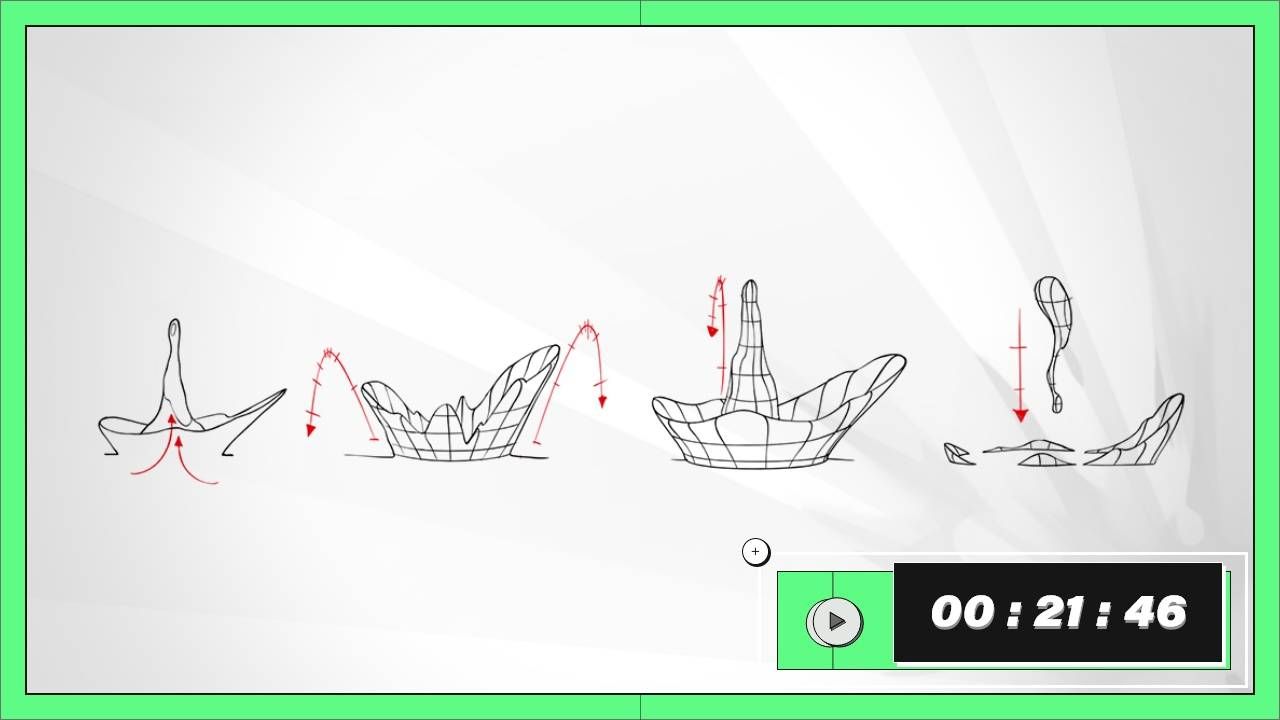
Elemental Foundations
Instructor: Dan Elder
Included with VFX-A All Access
Learn about the different principles used in 2DFX animation. Level up the visual appeal of your effects with these lessons on fire, liquid, dust, debris, and more!

3.5+ Hours
This course includes over three and a half hours of FX training.

Skill Level
Beginner Level One course for new artists.

Videos & Files
This course includes downloadable project files to follow along.

Instant Access
This course is immediately available to All Access members.
Course Breakdown
Lesson overview.

Principles of FX Design
The BMS (Big, Medium, Small) technique is not just for defining positive shapes, but also negative ones!
Try to design with variation, whether that is variation in your shapes, thickness, depth, line weight, or avoiding symmetry overall.

The Wave Principle
The Wave Principle will help you design effects with good flow and motion. It's used to create a wide variety of FX.
Think of a wave as an arc traveling up from an anchor point. Then control the speed by how many arcs you include before the wave reaches the end.

Creation & Dissipation
Burst a collection of shapes to life with creation, and dissipate FX away.
There are a variety of methods that can be used but at the introductory stage, focus on designing positive and negative shapes.

Cycles for Looping FX
Making looping effects look good is difficult. You can use keyframes to cycle FX forever.
Plan your frames ahead of time to ensure you create a design that transitions well from your final frame back into the first.

Fire FX Foundations
Learn the principles and techniques that will bring your fire FX to life. Fire's behavior relies on the scale of your effect.
Small scale, like a candle flame, is a great use of the wave principle, while large scale, like a campfire, will rely on follow through.

Water & Liquid Foundations
Realistic fluid effects are one of the most difficult VFX to create.
Regardless of the type of water effect you are designing, it is important to keep in mind how water likes to break apart. The viscosity determines how liquids glob together and their overall speed.

Smoke & Dust Foundations
Create all kinds of amazing smoke and dust effects from a smoke bomb to the biggest duststorm.
Smoke wisps behave more like fire, while billows act like clouds. Overlapping lines and shadows will help you define depth within your shapes. Think of smoke as overlapping shapes to help you define how light should interact with them.

Lightning & Flash Frames
Make snappy dynamic lightning effects full of energy.
One of the biggest mistakes when drawing lightning effects is designing it to travel across the screen. This actually results in slowing down the entire effect. Getting acquainted with different styles of flash frames will help you avoid this issue!

Debris FX Foundations
Shatter objects into pieces! Debris is essentially a miscellaneous category, as it includes things like props and background elements, not just objects breaking into pieces.
Get practice with drawing things in rotation, and using other elements as a base to create an effect from a prop.
What members say about VFX Apprentice

Ron Anati
VFX-A All Access Member
Been in love with game VFX since I can remember. I joined VFX Apprentice after a LONG time thinking about it, and loving every moment of it, studying whenever I can.

Bruno Cano
VFX-A All Access Member
Joining VFX Apprentice was, for sure, the best decision I've made in my early VFX career. The courses are great and the mentors and students are always trying to help. I just love being here!
Learn 2D and 3D FX with VFX-A All Access
All 2D FX, 3D VFX, and Advanced courses are included with VFX Apprentice All Access. Learn stylized and real-time FX from professional artists and animators.
LEARN MOREMore FX Courses Like This
Take what you learn in this course and apply these skills to creating FX for games and animation.

FX Concept Painting - Elemental Studies
2D FX: Level One
Try your newly-acquired skills while creating concept art of various elementals!

FX Design Principles
2D FX: Level One
This series covers five design principles of animation and how to apply them to VFX.

FX Timing Principles
2D FX: Level One
This series covers seven principles of timing in animation and how to apply them to VFX.



